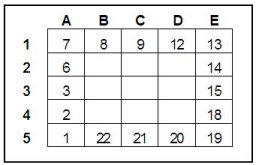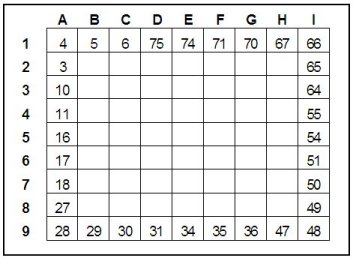Here is how you play the basic game (variations will come later):
First, each person draws two grids containing 5 columns and 5 rows with a total of 25 boxes. One grid will be for your own numbers, and one will be for trying to figure out your opponent's numbers. Then label each column and row using A through E for one axis and 1 through 5 for the other. Label one grid for yourself and the other for your opponent.
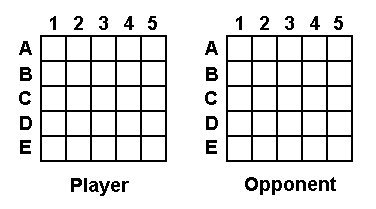
Next, each player fills in his own grid. To do this, he picks a starting number and places it in one of the squares. We limit the range of numbers used to numbers between 11 and 99.
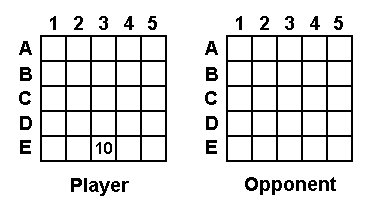
From there, add numbers, increasing by one each time, until all the boxes are filled. But you must move only horizontally and vertically (NOT diagonally) one square at a time to add the numbers.
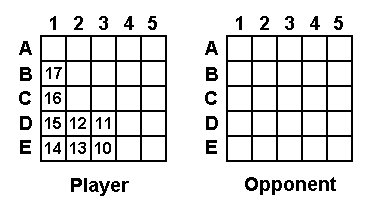
The numbers then create a kind of snake through the grid. This can sometimes be tricky, because you can't let yourself get trapped in a corner with half of the grid left empty.
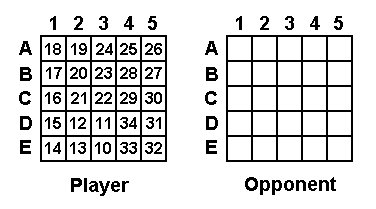
Once each player has a full grid, they take turns asking each other a grid coordinate to find out what number is there on their opponent's grid. For example:
Player: "E-1?"
Opponent: "46."
Opponent: "B-3?"
Player: "23."
The players write the answers given by their opponents in their second grid. From the answers provided, and through their own reasoning, the players try to determine the exact route of the opponent's number string. The first one to correctly do this is the winner.
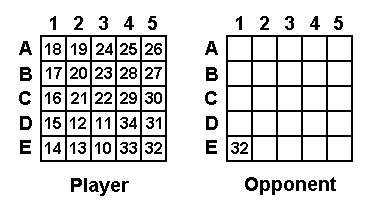
Here are a few more variations on the original game. If playing with a 5 x 5 grid seems too easy, then try using larger grids, like the ones below. But be prepared for a longer game!
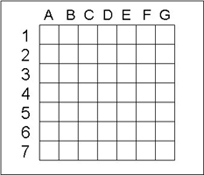
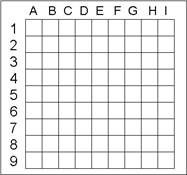
And you don't only have to use a square grid. Try some different layouts like these:
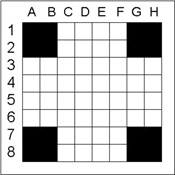
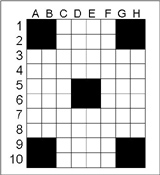
And if you really want a challenge, modify your rules to allow the number strings to progress not just horizontally and vertically but DIAGONALLY as well. If you try this, I suggest you start with a small grid (like the original 5 x 5) at first. As you can see below, allowing diagonal moves in the number string makes for a complicated pathway -- and some complicated guessing!
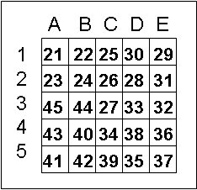
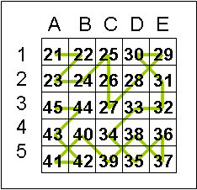
Another version of this game, that doesn't require the two-person, back-and-forth guessing is one in which the perimeter numbers are provided. The player, then, must fill in the remainder of the square according to whatever rules have been set (only vertical and horizontal moves, etc.) by the puzzlemaker. Below are an easy 5 x 5 grid example and a more difficult 9 x 9 grid example. Click on each puzzle to see its solution.
